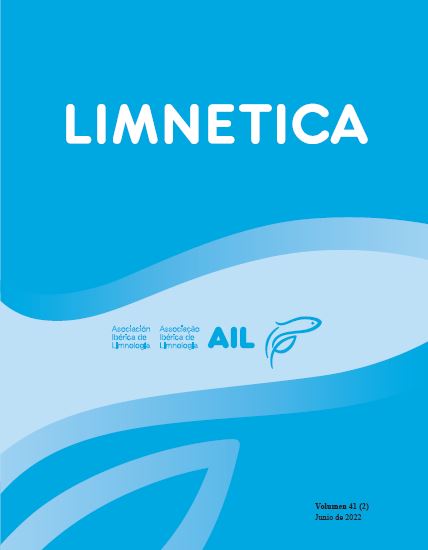Colonization and decomposition of litter produced by invasive Acacia dealbata and native tree species by stream microbial decomposers
Abstract
Changes in forest composition and litter inputs to streams due to invasion by exotic tree species can affect the functioning of freshwater ecosystems. Acacia dealbata is an important invasive tree species in Mediterranean areas, and often replaces the native riparian vegetation. In this study, we assessed the chemical characteristics of three litter types produced by the invasive Ac. dealbata (leaflets, flowers and pods) and leaf litter produced by two native tree species with contrasting litter characteristics (Quercus robur and Alnus glutinosa). We then assessed litter decomposition and associated microbial activity (i.e., overall microbial metabolism as respiration, fungal growth as biomass accumulation, and reproduction by aquatic hyphomycetes as conidial production), and the aquatic hyphomycetes community structure, in laboratory microcosms. In general, Ac. dealbata pods supported lower microbial activity and decomposed slower than all other litter types, due to their low nutrient concentrations and high carbon:nutrients molar ratio. Alnus glutinosa leaf litter supported high microbial activity and decomposed fast, due to its relatively high nutrient concentrations, low carbon:nutrients molar ratios and low lignin concentration. Acacia dealbata leaflets and flowers and Q. robur leaf litter generally had similar microbial activity and decomposition rates, intermediate between those of Ac. dealbata pods and Al. glutinosa leaf litter, likely due to trade-offs between nutrient concentrations and concentrations of structural and secondary compound among litter types. Aquatic hyphomycetes community structure also differed among litter types. For instance, Ac. dealbata pods had the lowest species richness per sampling date, but due to high dissimilarity among replicates, total species richness over the incubation period was comparable to that of other litter types. The invasion of native riparian forests by Ac. dealbata can affect the quality of litter inputs into streams, potentially affecting the community structure and activity of microbial decomposers, thus altering the functioning of stream ecosystems.
##submission.downloads##
Pubblicato
Fascicolo
Sezione
Licenza
Los autores que publican en esta revista están de acuerdo con los siguientes términos:
- Limnetica está bajo una licencia de Creative Commons Atribución-NoComercial 4.0 Internacional.
b. Los autores pueden establecer por separado acuerdos adicionales para la distribución no exclusiva de la versión de la obra publicada en la revista (por ejemplo, situarlo en un repositorio institucional o publicarlo en un libro), con un reconocimiento de su publicación inicial en esta revista.
c. Se permite y se anima a los autores a difundir sus trabajos electrónicamente (por ejemplo, en repositorios institucionales o en su propio sitio web) antes y durante el proceso de envío, ya que puede dar lugar a intercambios productivos, así como a una citación más temprana y mayor de los trabajos publicados (Véase The Effect of Open Access) (en inglés).


